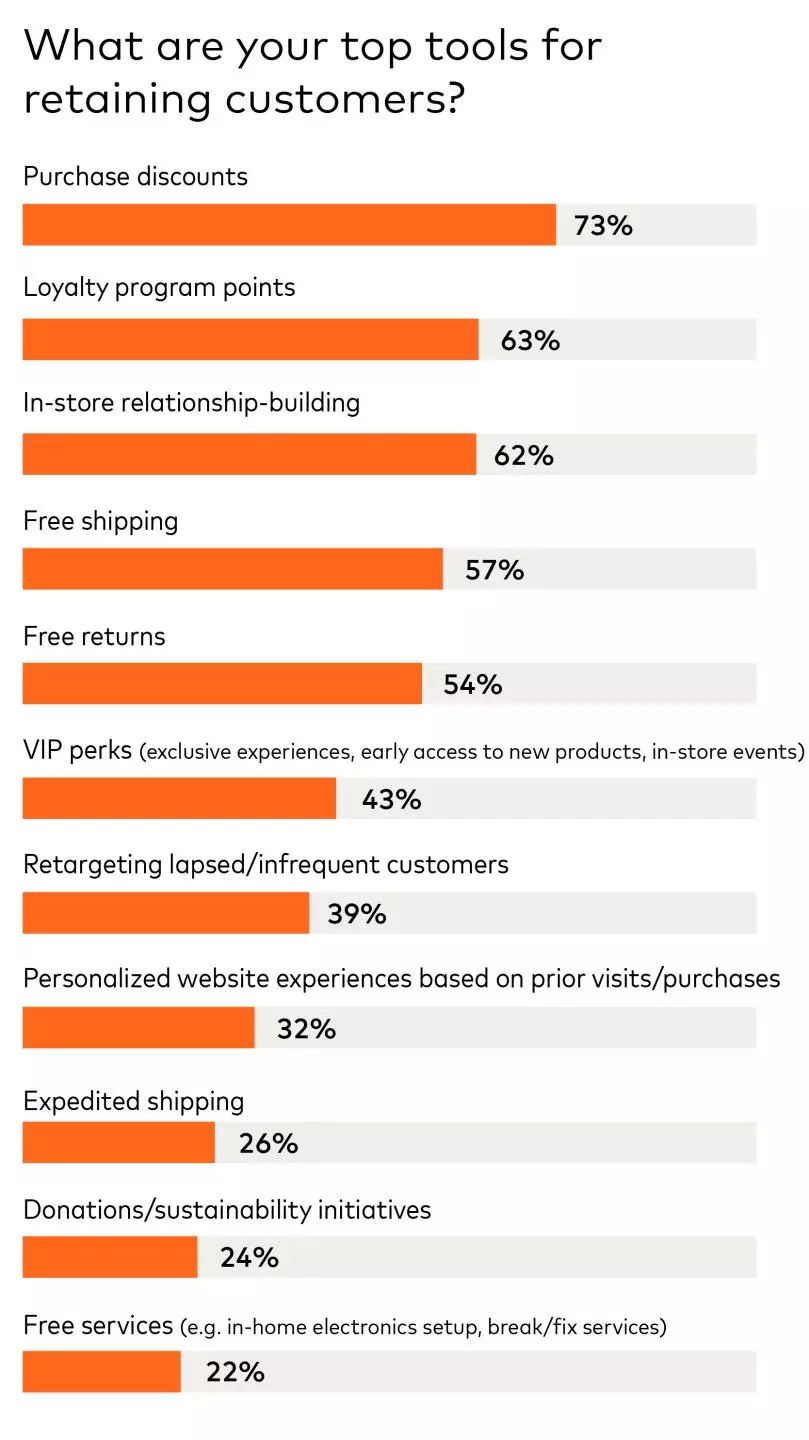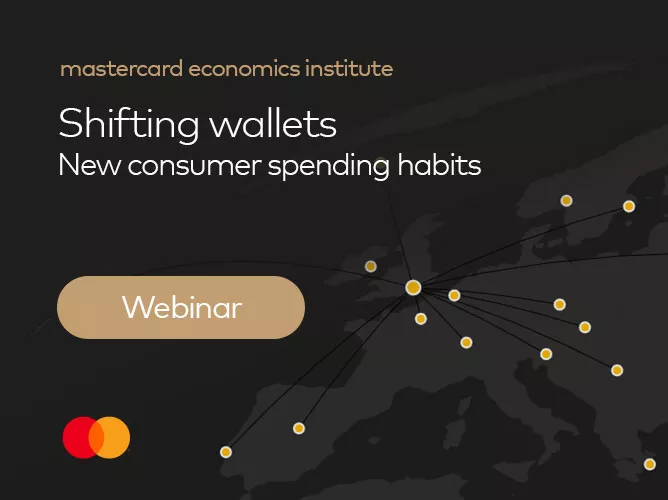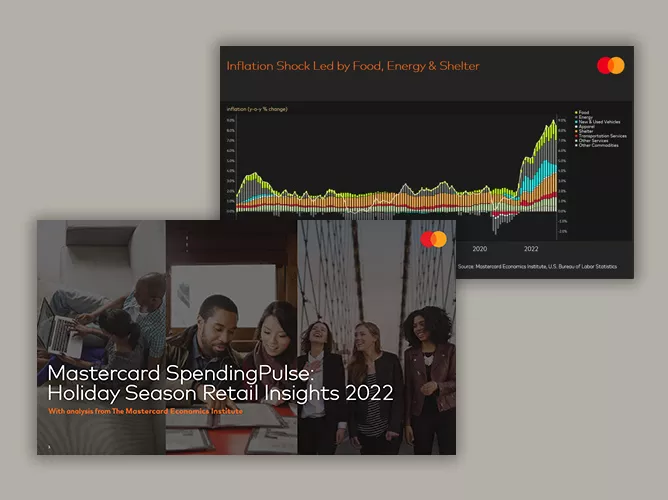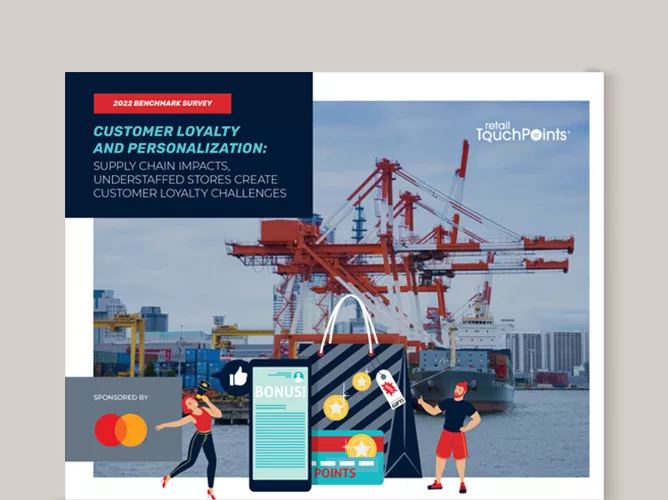October 2022
Many of us know the feeling of seeing a long-held goal finally within reach: One more stamp on the loyalty card, and the next scoop of ice cream is free.
Today, retaining customers takes a bit more effort than simply offering stamps on a card. Retailers and companies are challenged with standing out among a deluge of digital noise. Company-specific apps, push notifications, banner ads and even good old-fashioned email are used to acquire new customers. But is that enough to keep them?
By creating a clearly defined customer loyalty strategy and raising the levels of personalization each member can receive, one-time or occasional shoppers can be converted into repeat customers and, if done correctly, even brand ambassadors. Here are important insights for developing the right strategy from the 2022 Retail Touchpoints Customer Loyalty and Personalization Benchmark report, sponsored by Mastercard.
The more things change
After facing uncertainty and constant change for the past couple of years, customers and companies alike are seeking the “next normal.” Shoppers still grapple with “out of stock" messages when placing orders, companies struggle with supply chain challenges and both are bemoaning staff shortages due to the “Great Resignation.” The percentage of online retail sales has accelerated to levels that had been projected for 2-3 years from now and buyers are demanding convenience when it comes to ordering online, delivery and communication. And with inflation and prices on the rise, it’s becoming painfully obvious to consumers that value now does not equate to value then. Shopping habits may have shifted, but this much remains constant: Customers love savings and rewards.
73% of retailers surveyed responded that purchase discounts were their top tool for retaining customers
Less is more with purchase discounts
According to the 2022 Retail TouchPoints Customer Loyalty and Personalization Benchmark report, of the 115 retailers surveyed, 73% responded that purchase discounts were their top tool for retaining customers (a big jump from 55% in 2021) and loyalty program points followed closely behind at 63%.
Inflation is the likely cause for the surge of these tools. After all, much-desired items are more within reach with purchase discounts, while, with loyalty points, future savings are earned when they are cashed in.

A little special something
But simply offering discounts and points programs aren’t enough for retailers and companies to hold on to shoppers anymore. Without an organic sense of connection, retaining customer attention is more difficult and company communication might go unnoticed. A sophisticated personalization strategy can help to differentiate one brand from another.
It comes as no surprise, then, that offering website experiences based on customer’s prior visits and purchases rose from 21% in 2021 to 32% this year. Knowing what a shopper purchased, when it was purchased and in what quantities, can be used to send a tailored message that is honed to such a personal level that it evokes an actual emotional reaction
That message can now even come from internet personalities. No one expected to budget for influencers years ago, but with the rapidly growing impact of social commerce, everything can be personalized, and customers are paying attention to the messages that speak to them. Certain items can also be promoted on different channels, while other forms of communication can fully change format and tone depending on the message. Companies and retailers are showing increased enthusiasm for personalization and the technology that could harness its potential.
Offering website experiences based on customer’s prior visits and purchases rose from 21% in 2021 to 32% this year.
Sticky, meaningful experiences
As easy as it is to blame the lower-priced competition for when repeat purchases are not meeting targets—an idea that is likely to remain until inflation retreats—it’s up to the companies to combat these challenges, find the right strategy and navigate digital and in-store personalization to maintain and raise customer retention.
Stephanie Meltzer-Paul, Mastercard’s EVP of Global Loyalty, put it best in the Retail TouchPoints report: “Truly impactful loyalty programs … not only drive engagement, but evolve and expand with shifting expectations, [going] beyond the transaction.”
While the paper punch card may be a relic of the past, in effect, it’s evolved and gone digital in the form of digital loyal reward points and personalized website experiences, providing customers with a reason to return and the option for something even better than ice cream.
Learn more insights on loyalty and personalization in the 2022 Retail TouchPoints Customer Loyalty and Personalization Benchmark.












